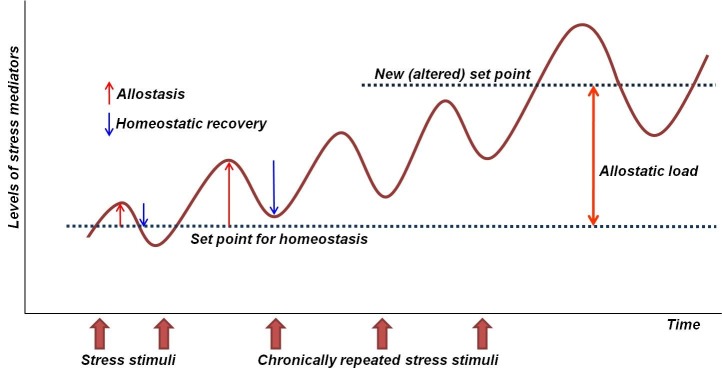Fig. 2. Stress, allostasis, and allostatic load. Stress is any stimulus inducing either adaptive or maladaptive allostasis (changes in homeostasis) of stress mediators, which constitute the autonomic nervous system (blood pressure, catecholamines), metabolic hormones (cortisol, insulin), and pro- & anti-inflammatory cytokines. If stress stimuli are excessive and repetitive, recovery to the original homeostatic levels may be incomplete (indicated by the second blue arrow). As a result, chronic stress can make a body system to anticipate, as if such a new (stressful) environment would persist, demanding a newly defined set point for future adaptation. Thus, the difference between the new and old set points can be understood as a ‘cumulative burden of adaptation to stress’- i.e., allostatic load. Examples of allostatic load may be found in the primary mediators (hypercortisolemia, increased inflammatory cytokines), secondary outcomes (elevated blood pressure, overweight, insulin resistance), or tertiary outcomes (hypertension, diabetes, obesity, coronary heart disease, neurodegenerative disorders). For more details, see reference # 6.

